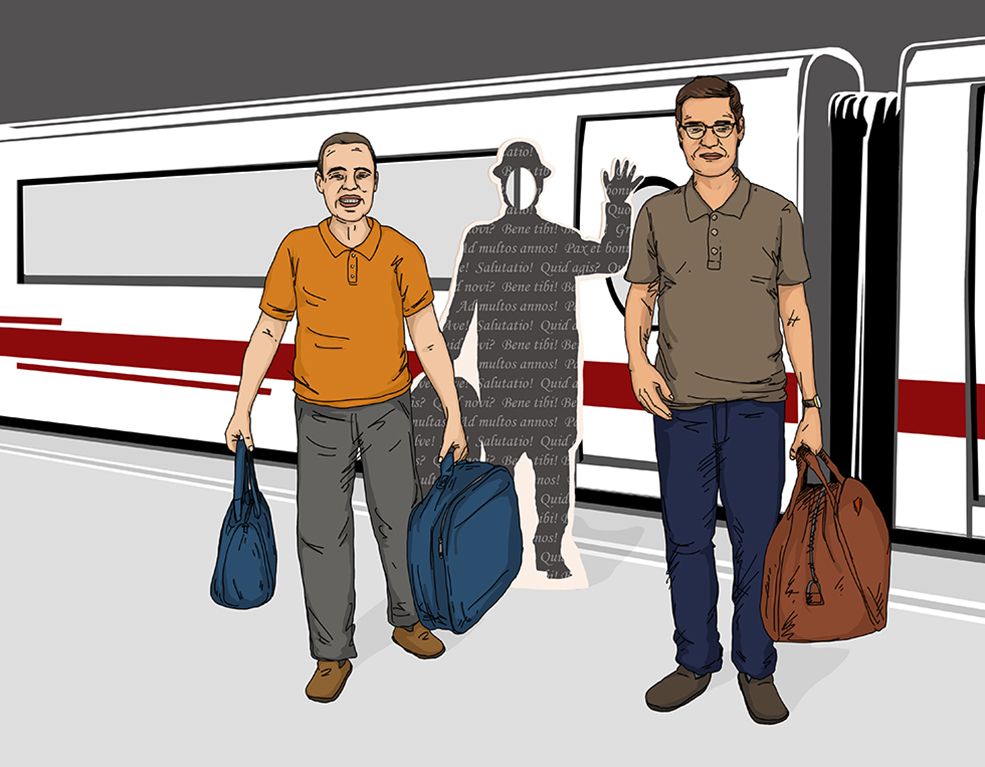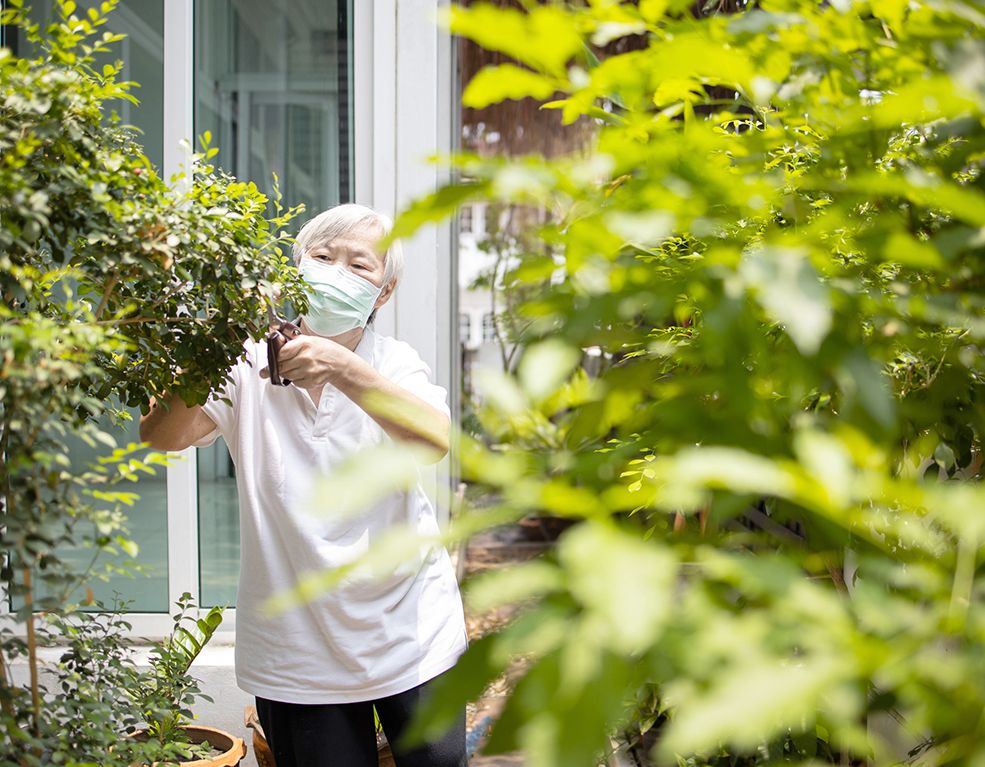The coronavirus pandemic has upended the lives of people and organizations. It has also ushered new ways of working, living, and worshipping. In the current volatile situation, people, organizations, and communities are continuously evolving ways to respond to the challenges with relevant policies, programs, and approaches in the aftermath of the pandemic.
The Church as an institution is no exception. It faces daunting challenges to remain relevant and carry out its pastoral commitment to the faithful and shepherd its members. “We learn to live with the current situation wrought by the pandemic as a community of believers,” says Msgr. Policarpio John Luza, parish priest of St. Lawrence the Deacon Church, Archdiocese of Capiz.
According to him, the parishes that are not so financially viable, especially in far-flung areas of the Philippines, are grappling with the volatile scenario. Pastoral activities, inadequate church finances to maintain its facilities, paying the salary of church workers, and other ancillary expenses are greatly affected.
Meanwhile, individuals and communities are supporting the church with generosity. They contribute towards the paying of church expenses to some extent, as funds have dried up drastically in the wake of protracted lockdown imposed by the government to contain the spread of COVID-19.
“People have lost jobs and family members. Their sources of income have been affected. They are struggling to survive or pay their expenses of the household, education, healthcare, and other personal and community needs,” articulates Julieta Teppang, parish pastoral coordinator, Nativity of Our Lord Church, Cubao.
Despite this, humanity is bubbling with life, faith, and resiliency. People are keeping their hope high in God amidst the pandemic, she added. “We have to deal with the reality that parish finances are a big problem nowadays. We used to depend only on our parishioners who come to our office and give some financial assistance through their love offerings,” says Maria Corazon Clores Villamante of San Isidro Labrador Parish, Pinyahan, Quezon City, Diocese of Cubao.
“If there is no way, God will make a way to manage churches. After all, it is a divine institution,” she says.
Use Of Social Media
Keeping in mind the health protocols, as directed by local and national governments, most of the parishes across the country, on and off, have been livestreaming online Masses, adoration to the Blessed Sacrament, praying the Rosary, and other forms of piety and devotion, as well as reaching out to believers as part of spiritual enrichment.
“In my opinion, receiving the Body of Christ during the face-to-face Mass is real, while receiving Christ through Spiritual Communion is not enough. In the light of this unusual circumstance which is beyond our control, we have to accept the situation,” concedes Jesselito M. Castro, a parishioner of Christ the King Church, Veterans Village (Project 7), Quezon City.
“As remote work becomes an integral part of living, praying and worshipping at home or individually has become common with the means of social communication,” he admits.
Parishes that are good at social communication ministry with required logistics were able to swiftly navigate their online religious and liturgical services for their members. Other parishes that were not so well-equipped with means of communication media or lacking the available sources/infrastructure were forced to do the needful in a staggered manner as much as possible.
“It is so alarming that this pandemic brought a huge impact in our liturgy ministry because our parish is always closed due to Inter-Agency Task Force guidelines,” acknowledges Luzviminda Parada, liturgy coordinator at Holy Family Parish, Kamias, Quezon City.
“No parishioners to attend our daily Masses–only two Lectors and Commentators, one altar server, and the priest presider. There is a big difference between virtual and actual Masses.
“It is not that easy to remain relevant spiritually amid the pandemic, yet we have to face the reality with greater faith in God,” she states.
Attendance Of The Faithful
Since the government imposed lockdown in the country, attendance of the faithful in religious activities has been either totally zero or partial with 10, 30, or 50 percent capacity of a church. These measures keep on changing depending on the number of cases of increase or decrease of COVID-19 patients in the locality, region, or province.
“People are often confused with regard to the guidelines provided by the government for religious service–when to attend face-to-face Mass or online,” expresses Kristine Rey, a youth from San Roque Parish, Archdiocese of Manila.
Some senior citizens who were used to attend the face-to-face Mass were forced to stay indoors and participate in online Masses. “I long to attend face-to-face Mass, but cannot due to my health conditions and age,” says Brenda Tan, 66, a parishioner of St. Peter Church, Commonwealth, Diocese of Novaliches.
However, the flip side of the pandemic for some is that those who are healthy, without any comorbidity, and fully vaccinated, are reluctant to attend face-to-face Mass even if they are eligible whenever there is a possibility.
“I am afraid to go to attend face-to-face Mass for fear of contracting coronavirus. I better attend online,” says Reymond Hizon, a a 23-year-old college student from the Diocese of Pasig.
For him, it is better to remain a practicing Catholic and not be a regular church-goer due to the pandemic.
Indeed, all parishioners cannot avail themselves of online liturgical services. For most, access to online church services is affected due to the overall internet connection and availability of communication facilities. So, digital convenience is not feasible for all.
“Due to the pandemic, church activities especially Masses are disrupted. Because of the restrictions, the church reaches out through social media. Instead of regular Masses, online Masses substitutes for the time being,” Castro confirms. But the problem is the regular parishioners are composed of the cross-section of society. Only those who have Wi-Fi or smartphones can avail of it.
Community Outreach Programs
Amid the uncertainty of the pandemic, parishes and church institutions have tried their best to reach poor communities with a charity providing material support to people and families in need.
“The coronavirus crisis enabled us to test our Christian charity and service. We solicit funds to undertake outreach activities such as community pantries,” says Castro.
The spirit of positivity and generosity has inspired each other in many places. People have been contributing to holding feeding programs or providing groceries to people, he adds. The source of funds needed by the church to perform its social responsibilities to the community is also affected, Castro explains.
It is heartening to see how Catholics display their resilience amid challenges and help others.
In some cases, some church-based associations collaborated with other government agencies and NGOs to help poorer communities, creating awareness on coronavirus. This enables them to protect themselves against contracting, spreading, and suffering severe illness from COVID-19.
“Since the pandemic, we always have had these ‘hot meals’ and ayuda (help or subsidy help from the government) coming from big NGOs who used to supply our parish for our outreach programs,” clarifies Villamante of San Isidro Labrador Parish.
“Without these NGOs, we cannot make this possible due to a lack of budget. We have our list of benefactors and list of beneficiaries,” she adds.
Vaccination And Mental Health
The pandemic blues affect the mental well-being of people with depression, anxiety, and existential crises. The Diocese of Kaloocan has been organizing free mental health clinics in church premises. Bishop Pablo Virgilio David of Kaloocan directed parishes in his diocese to open free mental health clinics.
On the other hand, several parishes, church premises, and educational institutions are being converted to vaccination facilities. In some regions, due to the surge of COVID-19 cases, some church facilities are changed into coronavirus hospitals or isolation centers on an emergency basis. “Church is not just a place of worship, it is also a place of healing,” assumes Fr. Robert Reyes of the Diocese of Cubao.
Meanwhile, several bishops, priests, and church workers are urging people to get vaccinated to avoid hospitalization or to achieve herd immunity soon. “We are encouraging all to avail of the vaccines,” says church volunteer Maria Christine of the Archdiocese of Cebu.
The pandemic is going to stay here for some time. All, including the church, must learn to keep safe and protect themselves while carrying out their works for the common good and survival.
“The country may become endemic with the pandemic as experts say. Till then, we have to pray hard that it may end soon. In the meantime, all have to follow the health measures to keep our families, communities, and parishes safe for one another,” concludes Father Reyes.


























